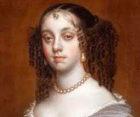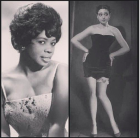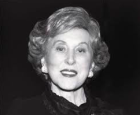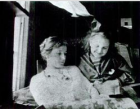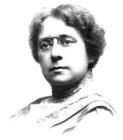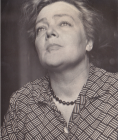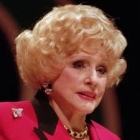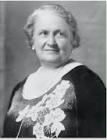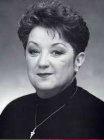blogpage
“Most Likely to Succeed” (1969)
May 24, 2021 by Marlene Wagman-Geller
A slice of Americana is the Wendy’s hamburger emporium with its mascot of a red-haired girl, pigtails bound with blue bows. Behind the fresh-faced child lies a Horatio Algier's story.
“Off With Their Heads!” (circa 1553)
May 13, 2021 by Marlene Wagman-Geller
A time-honored rite of childhood is the nursery rhymes we remember no matter how much time goes by. Surprisingly, the historical references behind the ditties contain veiled references to murder and mayhem. Mary Shelley, Edgar Allan Poe, and Stephen King met their match in these medieval tales. And what is with all that falling? Jack and Jill break their heads in their descent down the hill; Humpty Dumpty is cracked beyond repair from his tumble from the wall; everyone collapses at the end of Ring-Around-the-Rosie. Nursery rhymes served as a coded means of social protest in an era when speaking your mind would cost you your head.
The Kent State Pietà (1970)
May 03, 2021 by Marlene Wagman-Geller
“The wrong place at the wrong time,” is a phrase with which many can relate, but likely not to the extent of the woman immortalized in the iconic Kent State photograph. The black-and-white image made a teenager the most famous unknown person of a turbulent time.
“Invisible to the Eye” (1943)
Apr 02, 2021 by Marlene Wagman-Geller
If you gaze at the sky and see a flower in a glass house, you are familiar with the golden-haired boy who met a downed airman in the Sahara Desert. From his new friend, the pilot learns the essence of life, love, and friendship. What was lost in literary legend was the nonfictional identity of the Little Prince’s thorny rose.
What Would the Nanny Do? (1683)
Mar 29, 2021 by Marlene Wagman-Geller
The television series, The Nanny, cemented the image that women from Queens have voices that can shatter glass. While the winsome Fran Fine may have reigned over the heart of Mr. Sheffield, the Noo Yawk borough from which she hailed became known as Queens after a woman cut from a far different cloth: Catherine of Braganza.
“Boop-Oop-a-Doop!” (1930)
Mar 24, 2021 by Marlene Wagman-Geller
No one would have any trouble picking out the ageless “It Girl” from a line-up due to her signature garter, skimpy dress, and kewpie doll eyes. And yet few would be able to name the woman who served as Betty Boop’s prototype, the original lewdie toon.
“Jars of Hope” (1946)
Mar 03, 2021 by Marlene Wagman-Geller
Hamlet railed at Ophelia, “God hath given you one face and you make yourselves another.” Although the Prince of Demark viewed makeup as female duplicity, a twentieth century woman used cosmetics to create a billion-dollar blue empire. Although the tycoon became a household name to millions of women, few are privy to her saga.
From Raggedy to Riches (1915)
Feb 22, 2021 by Marlene Wagman-Geller
Who is the most fabulous fictitious redhead: Wilma Flintstone, Pippi Longstocking, Princess Ariel? Such a list must include the icon who has been going strong for a century. Her creator named her after a flesh and blood girl who was also an entertainment juggernaut.
“The Daughter of My People” (1912)
Feb 18, 2021 by Marlene Wagman-Geller
An investigation into the name of the largest women’s philanthropic organization in North America would reveal a biblical queen, a twentieth century visionary, the birth of a country that became a key chess player in world history.
“The Hope of Spring” (1957)
Feb 08, 2021 by Marlene Wagman-Geller
Boris Pasternak’s Dr. Zhivago depicts a romantic triangle set against the backdrop of the Russian Revolution. What makes the epic more evocative is the realization that the tragic Lara was the author’s muse who paid a terrible price for her forbidden love.
The Pink Queen Bee (1963)
Feb 07, 2021 by Marlene Wagman-Geller
The color pink brings to mind Barbie, Disney Princesses, Hello Kitty, and pussy cat hats. A woman whose fascination with pink left her rolling in the green, and her name became beauty’s calling card.
“Maybe She’s Born With It” (1915)
Feb 03, 2021 by Marlene Wagman-Geller
What is lime green and bubble-gum pink with a black interior? Hint: It has been a staple cosmetic for over a century. Women the world over own the iconic mascara; however, what is buried behind its brand name is a tapestry that involves money, murder, and mayhem.
“Huff and Puff” (2005)
Jan 27, 2021 by Marlene Wagman-Geller
Jim Morrison of The Doors remarked, “Whoever controls the media controls the mind.” The Greek baroness of the media became a household name when her website made her a contemporary Colossus of Rhodes.
“Il Figlio Mio” (1929)
Jan 25, 2021 by Marlene Wagman-Geller
The Victorian adage of children should be seen and not heard embodies the traditional educational system. Teachers serve as the sage on the stage, pupils empty vessels needing filling. The paradigm shift came about through a twentieth century miracle worker whose name, if not her biography, spread throughout the world.
Tikkun Olam (1980)
Jan 21, 2021 by Marlene Wagman-Geller
In the olden, perhaps more golden days, the colors associated with October were the yellow and red of autumnal leaves, gourds of orange. The month is also related to pink, the favorite shade of a woman who succumbed to a dreaded killer.
Is There Still Sex? (1994)
Jan 18, 2021 by Marlene Wagman-Geller
Before the four female Musketeers cut a swath of men, money, and Manolos in Manhattan, there was the real-life party girl who used her nightly escapades as fodder for her column. While the sexual anthropologist is not as famous as her fictional alter ego, she nevertheless experienced her fair share of beddings, breakups, and B.F.F.s.
“Love’s the Lamb” (1830)
Jan 13, 2021 by Marlene Wagman-Geller
The crown jewel of the nursery rhyme treasure chest is the tale involving a schoolhouse prank. The nineteenth-century story also encompasses three eminent Americans: the journalist who established the national holiday of Thanksgiving, the creator of a classic car, the scientist who invented the phonograph. Behind the tapestry was a young girl and her beloved pet.
“Artist Laureate” (1930)
Jan 11, 2021 by Marlene Wagman-Geller
The painting, American Gothic, is as emblematic of America as the bald eagle, the stars and stripes, and the Statue of Liberty. Yet many would be stumped as to the identity of the man and the woman who stand in front of the country’s second most famous white house.
Roe v. Roe (1973)
Jan 08, 2021 by Marlene Wagman-Geller
If one were to name a Supreme Court ruling, chances are the answer would be Roe v. Wade. However, if questioned as to the identity of the anonymous plaintiff, many would draw a blank. The flesh-and-blood Roe was as complicated as her judicial namesake.
“Ef You Don’t Watch Out” (1886)
Jan 04, 2021 by Marlene Wagman-Geller
Oliver Twist is British literature’s most endearing orphan; America’s counterpart is Orphan Annie, the little girl who went on a quest for her missing mother and father. The difference between the two is while Charles Dickens based his novel on a fictional boy, James Whitcomb Riley based his poem on an actual girl.
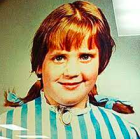
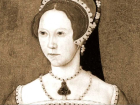
_w140_h140/photo%20kent%20state%20massacre(1)_04020338.jpeg)

